Intro
Compare Covid and flu symptoms, including fever, cough, and fatigue. Understand key differences and similar respiratory illness signs to determine if you have coronavirus or influenza, and learn when to seek medical help.
The COVID-19 pandemic has brought about a significant amount of confusion and concern when it comes to distinguishing between COVID-19 and flu symptoms. Both illnesses are respiratory infections, but they are caused by different viruses and have distinct characteristics. Understanding the differences between COVID-19 and flu symptoms is crucial for seeking proper medical attention, preventing the spread of infection, and managing symptoms effectively. In this article, we will delve into the similarities and differences between COVID-19 and flu symptoms, explore the causes and risk factors, and discuss the importance of vaccination and prevention.
As the world continues to navigate the challenges of the COVID-19 pandemic, it's essential to recognize the signs and symptoms of both COVID-19 and the flu. Both illnesses can cause respiratory problems, fever, and body aches, making it difficult to determine which one you might have. However, there are some key differences in the symptoms, severity, and duration of the two illnesses. By understanding these differences, you can take the necessary steps to protect yourself and your loved ones from getting sick.
The COVID-19 pandemic has highlighted the importance of public health, vaccination, and prevention. With the rise of new variants and the ongoing transmission of the virus, it's crucial to stay informed and take proactive measures to reduce the risk of infection. In addition to understanding the symptoms of COVID-19 and the flu, it's also essential to recognize the role of vaccination, social distancing, and personal hygiene in preventing the spread of illness. By working together, we can reduce the impact of COVID-19 and the flu, and create a healthier, safer community for everyone.
Understanding COVID-19 Symptoms
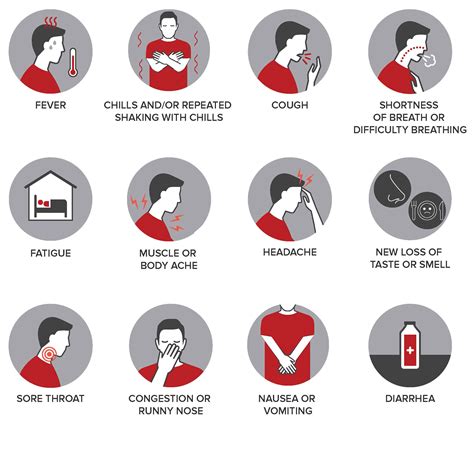
Common COVID-19 Symptoms
The most common symptoms of COVID-19 include: * Fever * Cough * Shortness of breath * Fatigue * Headache * Sore throat * Runny nose * Body aches * Diarrhea * Nausea and vomitingUnderstanding Flu Symptoms
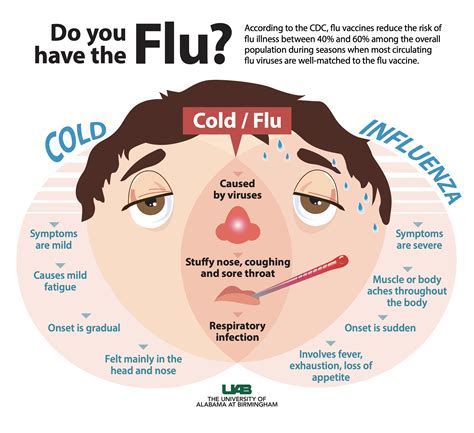
Common Flu Symptoms
The most common symptoms of the flu include: * Fever * Cough * Sore throat * Runny or stuffy nose * Body aches * Headache * Fatigue * Diarrhea * Nausea and vomitingKey Differences Between COVID-19 and Flu Symptoms
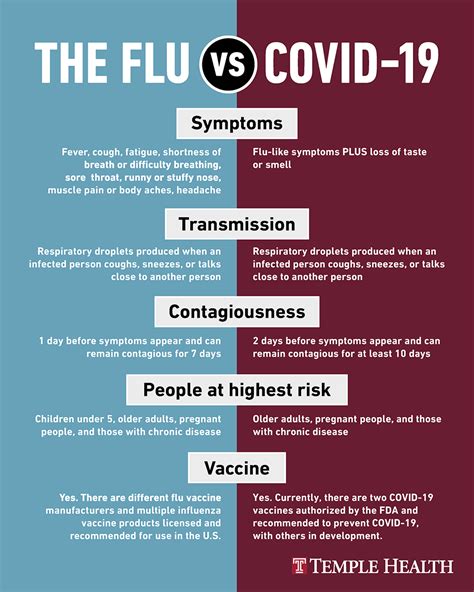
Similarities Between COVID-19 and Flu Symptoms
Despite the differences between COVID-19 and the flu, there are also some similarities between the two illnesses. Both COVID-19 and the flu can cause: * Fever * Cough * Body aches * Headache * Fatigue * Sore throat * Runny or stuffy noseCauses and Risk Factors of COVID-19 and Flu
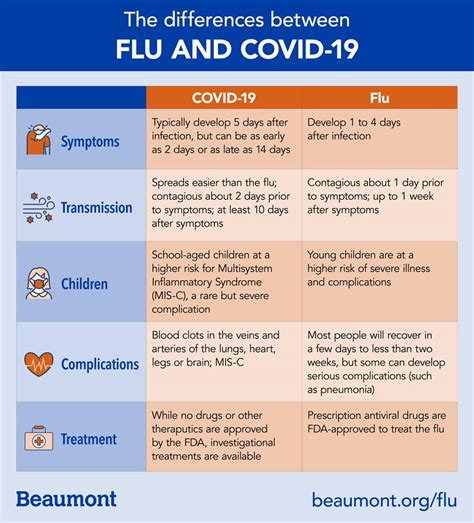
Risk Factors for COVID-19 and Flu
Certain groups of people are at a higher risk of developing severe symptoms and complications from COVID-19 and the flu. These groups include: * Older adults * Young children * People with underlying medical conditions, such as heart disease, diabetes, and lung disease * People with weakened immune systems, such as those with HIV/AIDS or undergoing chemotherapy * Pregnant womenImportance of Vaccination and Prevention
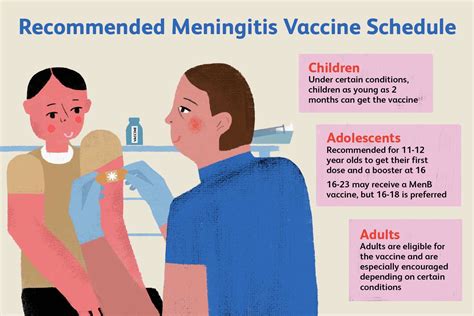
Benefits of Vaccination
Vaccination has several benefits, including: * Reducing the risk of developing severe symptoms and complications * Preventing the spread of illness to others * Reducing the risk of hospitalization and death * Protecting vulnerable groups, such as older adults and young children * Reducing the economic burden of illnessConclusion and Next Steps

We invite you to share your thoughts and experiences with COVID-19 and the flu in the comments section below. Have you or a loved one been affected by either illness? What steps have you taken to prevent the spread of infection? Your feedback and insights are valuable to us, and we look forward to hearing from you.
What are the most common symptoms of COVID-19?
+The most common symptoms of COVID-19 include fever, cough, shortness of breath, fatigue, headache, and sore throat.
How is COVID-19 different from the flu?
+COVID-19 and the flu are both respiratory illnesses, but they are caused by different viruses and have distinct characteristics. COVID-19 can cause more severe symptoms, such as shortness of breath, and can last for several weeks, while the flu typically lasts for several days to a week.
What are the benefits of getting vaccinated against COVID-19 and the flu?
+Getting vaccinated against COVID-19 and the flu can help reduce the risk of developing severe symptoms and complications, prevent the spread of illness to others, and protect vulnerable groups, such as older adults and young children.
How can I prevent the spread of COVID-19 and the flu?
+To prevent the spread of COVID-19 and the flu, practice good hygiene, such as washing hands frequently and avoiding touching the face, wear a mask in public places, avoid close contact with people who are sick, stay home from work or school when sick, and get plenty of rest and stay hydrated.
What should I do if I think I have COVID-19 or the flu?
+If you think you have COVID-19 or the flu, seek medical attention immediately. Contact a healthcare professional for guidance on testing, treatment, and prevention, and follow their instructions for managing symptoms and preventing the spread of illness.
